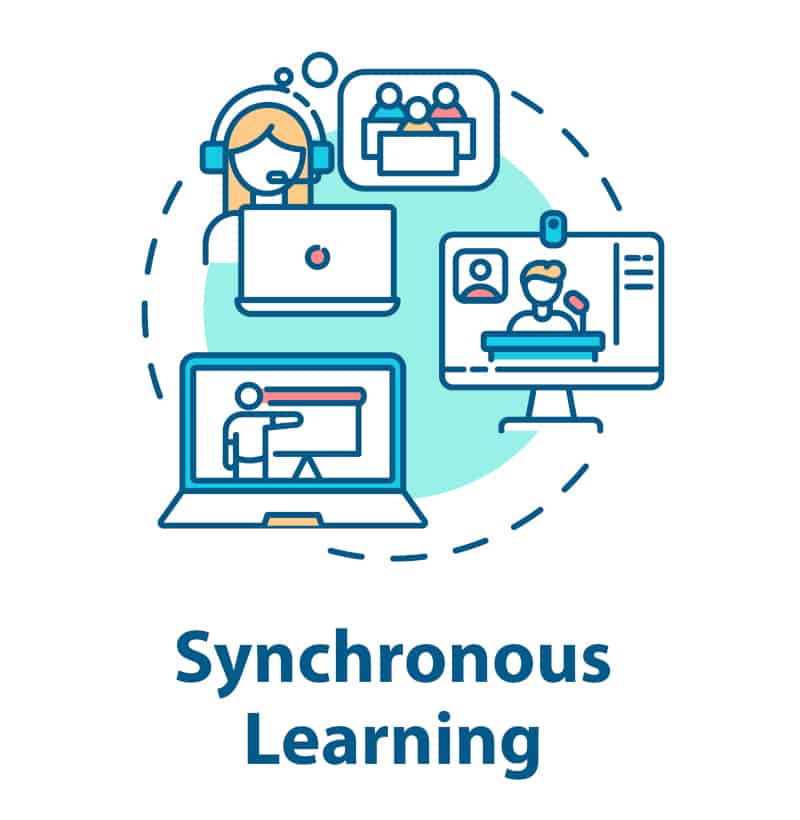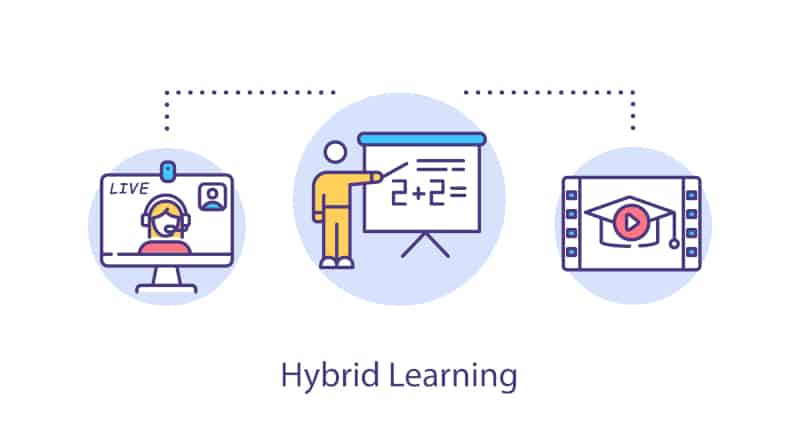Synchronous Learning
Synchronous learning is learning that takes place when the instructor and learners are present. It can be face-to-face or in a virtual classroom with everyone present at a specific scheduled time.
It’s the more traditional type of learning and works in favour of learners that can commit to a specific schedule. As a course facilitator you need to carefully plan your course schedule.
Bear in mind your learners have to book a time in their work schedules to attend your course in-person or virtually.

Examples of synchronous learning include
- Face to face instructor-led training
- Video conference classes
- Training and orientation of new employees
- Scheduled assessments and knowledge checks
- Live stream classes
With the Covid-19 pandemic there’s been a seismic shift. Instructor-led real-time training has moved online and learners are engaging via technology. They’re using a variety of tools including –
- Video conferencing via applications such as Zoom
- Audio conferencing
- Webinars
- Online chat
Pros
- Consistent schedule
- Develop a sense of community – learning is usually very interactive and learners have the opportunity to engage with their peers
- Questions are asked and answered in real time
Cons
- Fixed inflexible schedule
- Difficult to schedule a time that works for every learner
- Technical challenges with internet connections and technology devices
Asynchronous Learning
The term asynchronous learning refers to learning that occurs at different times and places specific to each learner. The learning facilitator maps out a learning path and the learner engages at their pace. There is no real time interaction with the other learners.
Asynchronous learning is largely associated with online learning. Examples of asynchronous learning include:

- Pre-recorded lectures
- Online class discussions
- Online courses
- Learning activities such as quizzes, problem solving, simulations and games
- Virtual forums and discussion boards
Covid-19 has caused the Zoomification of education and widespread Zoom fatigue. Asynchronous learning is the flexibility that enables the personalisation of learning to meet a learners specific needs. The learners choose when, where, and how they engage with the course.
Pros
- Reduces training costs – no travel or accommodation expenses
- Scalable
- Flexibility – learning at your pace and a time that works fpr you
- Learner centered – allows for a wide range of training materials that can be accessed from anywhere at any time
- Immediate feedback on assessments
Cons
- Delayed interaction between learners and their instructors – feedback is not in real time
- Misinterpretation of course material – no option to get real time clarification on queries
- Isolation – learners may not have access to a community of fellow learners
- Requires self-discipline
Synchronous learning is the most popular style of learning but with the advent of the Covid-19 pandemic asynchronous learning has accelerated. Understanding the differences and the pros and cons of both will give you the knowledge to understand what works for your workplace or organisation.




